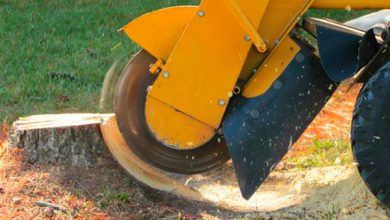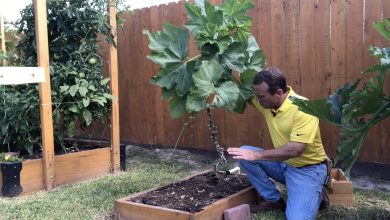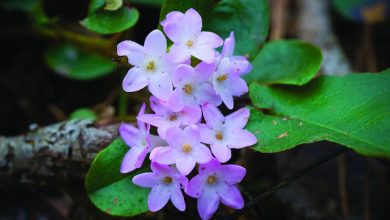5 WAYS TO PLANT AND MAINTAIN BLUEBERRY PLANTS

Blueberries are a good source of vitamin C, have ample amounts of antioxidants, and are rich in fiber. Generally, Blueberry bushes are planted in the early to mid-spring. Once rooted and properly cared for, these perennial plants produce juicy fruits year after year. Planting blueberries is a great way to add color, flavor, and nutrition to your yard or garden. But before you head to the nursery, there are a few things you should know about how to plant and care for blueberry plants.
Here is the blueberry planting guide that would not just help you in planting but maintain blueberry plants too. Read ahead to learn more!
Preparing the Soil
Select and choose the planting site that receives at least eight hours of sunlight each day and soil that is acidic in nature. Its pH should be around 5.5, further sulfur can be added to make the soil more acidic and suitable for the growth of blueberries.
Depth and Spacing
Dig a hole that is 1 foot deep and 2-1/2 feet wide. Put some soil at the bottom. Plant the blueberry bushes at least 5-6 feet apart. If you plant in rows, allow 6 to 8 feet distance between the rows. Surround it with garden soil, compost, and peat moss to add nutrients to the blueberry bush.
PLANTING BLUEBERRIES IN CONTAINERS
You can also grow blueberries in containers, as long as the containers have drainage holes and are large enough to accommodate the roots of the plants.
Take a weatherproof container half-filled with soil, then sow the blueberry plant on top of it. Before placing the plant in the pot, loosen the roots. Add some compost and peat moss and level up the soil. Dust it with some acidifier to keep the pH level low.
Further to keep the soil moist add a layer of mulch. Timely watering is important as containers dry out quickly. However, blueberry plants can’t be overwatered as they have shallow root systems.
If the climate stays below freezing during winters, you need to move the blueberry containers to the protected area. But when you are in the hottest part of the summer, you need to move the plant to a place from getting them scorched and can get afternoon shade.

WAYS TO MAINTAIN BLUEBERRY PLANTS
Planting blueberries is not as difficult as one might think. With a little planning and preparation, anyone can enjoy blueberries straight from their own backyard. Before slowing down, healthy blueberry plants can fruit for 15 to 20 years!
- LIGHT AND AIR
Blueberry plants need at least six hours of direct sunlight each day, so a south-facing location is ideal. Blueberries require good air movement with full Sun for at least 8 hours a day.
- SOIL
Plant blueberries in soil with a pH level close to 4.5 and it should be rich in organic matter.
Mulching after planting is essential to achieve better results. To attain the correct pH for growing blueberries amending the soil is advisable before plantation according to the season. To lower the pH, mix aluminum sulfur and or garden sulfur into the top six inches of the soil. One should amend the soil at regular intervals as soil reverts to its original pH.
At any time you see the blueberry leaves turning yellow and worsening, you should get the soil pH tested. This condition may occur when the blueberry plant is unable to access the iron present in the soil.
- TEMPERATURE AND HUMIDITY
Temperature requirements vary with the species. Blueberry varieties like traditional high brush types need cold winter climate and humid air whereas species like Southern high bush have lower chill requirements and respond well to warmer temperatures.
- FERTILIZER
Heed the use of high nitrogen fertilizers. Instead, you can plant clover under blueberries, it naturally adds nitrogen to the soil and prevents weeds. Spring is the perfect time to fertilize blueberries. Blueberries are part of flowering azalea, heather plants, and mountain laurel. Fertilizer should be planted after a month of planting as well as during early and late spring. Do water them thoroughly after that.
- WATER
Blueberries are shallow-rooted but need deep watering at least once a week. Maybe more during dry spells. But it is advisable to plant blueberries in an area that drains well or in raised beds as water-logged soil can cause root rot.
- POLLINATION
Blueberries can self-pollinate. Thus, planting more than one variety together produces better results. Ensure the varieties you plant should bloom at the same time.
- PEST AND DISEASE ISSUES
To keep deer and birds (they love blueberries) away from eating berries, one can opt for wire cages or nets.
Fungal diseases such as Anthracnose, Botrytis, powdery mildew, and mummy berry may occur in blueberries. You need to maintain good airflow around the plants, prune the crossing and rub branches in an effort to keep away diseases and insect problems.
Moreover, before planting blueberries, weeds should be restrained. Organic material for soil can be increased in order to reduce weed growth.
- PRUNING
Their high productivity itself wears them out. Canes become less productive when they are more than seven years old. Being prolific berry producers, blueberry bushes need to be pruned every year to keep dead, diseased, or damaged woods at bay.
Prune the blueberry bushes during late winter when they are still dormant.
Remove cross branches, and broken or diseased wood. This allows proper sunlight and airflow.
Carefully trim the bushes, remove two or three of the oldest canes but do not overboard the first year.
Clear out the debris or leaf litter from the base of the plants.
If the bushes are not pruned, the cane production may increase even more than they can support, lowering their productivity and growing smaller fruit. To maintain the health and productivity of the shrub, 20% of the older canes must be removed.
WRAPPING UP
Want to enjoy plentiful blueberries right at your fingertips? Keep patience! Blueberry varieties should be chosen according to climate, soil, and taste.
Further, give some time to young branches as they take about two years to produce fruit. Hopefully, the above ways of planting and maintaining Blueberry plants will help you make an informed decision.



